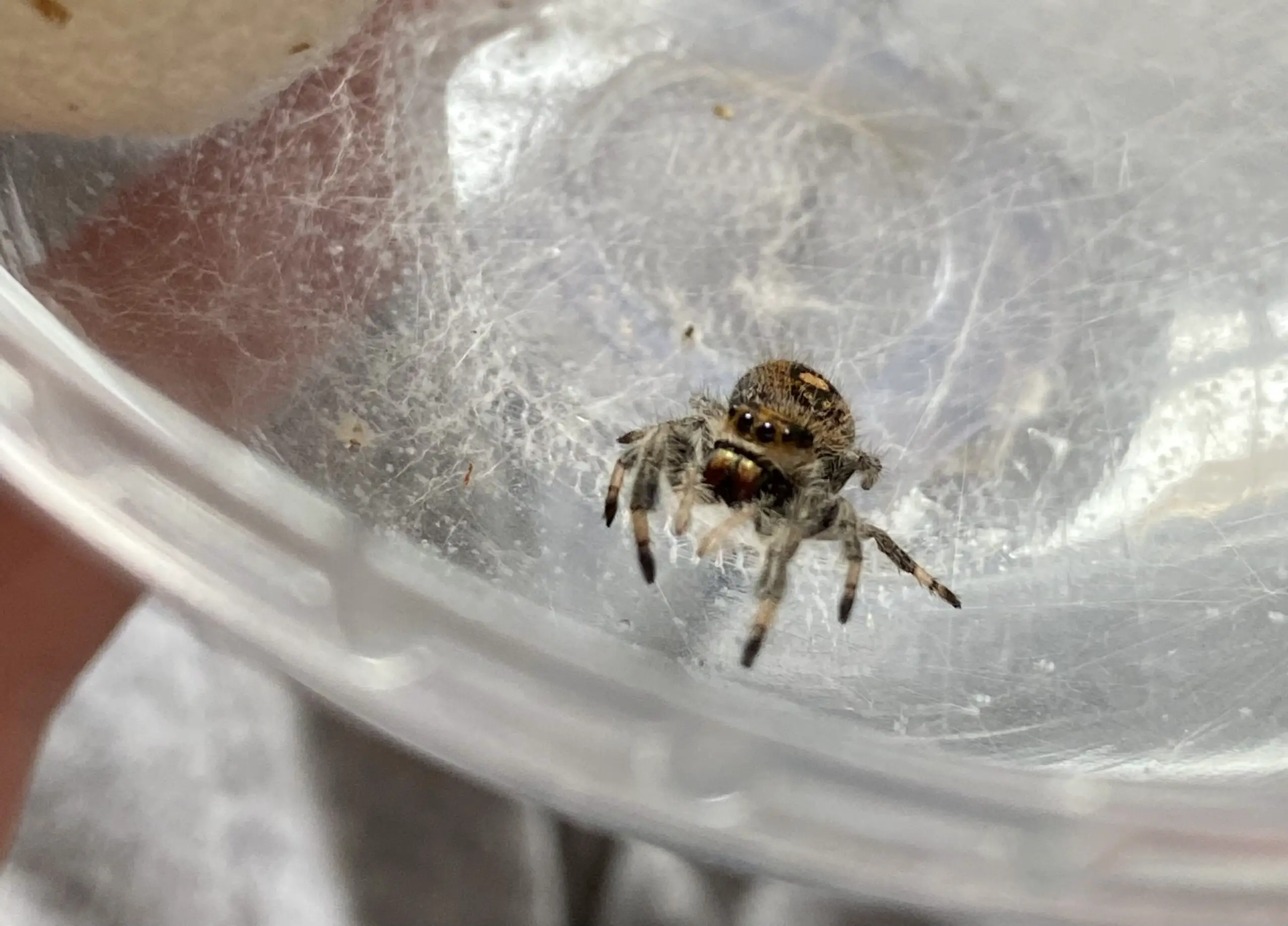Are Jumping Spiders Friendly?
When asked about friendly creatures, most people think of dogs or cats; very few think of arachnids, particularly jumping spiders. This might stem from the reputation spiders have developed from being called creepy crawlies, having eight spindly legs, or capturing prey in webs. But jumping spiders buck this trend.
Cute, seemingly fluffy, and experts in elaborate dances, jumping spiders are definitely unique. They have steadily grown in popularity, converting people with arachnaphobia to spider lovers, but are they as friendly as they look?
Do Jumping Spiders Get Along with Humans?
Jumping spiders have become widely known as a friendly spider species. With their cute appearance, almost docile temperaments, and simple care needs, jumpers are considered popular pets nowadays, particularly the regal and bold jumping spider species.
As you can keep jumping spiders as pets, it is often assumed that these spiders are friendly. However, not all jumping spiders will be accepting of humans; just like other pets, these little spiders develop their own personalities. Some spiders will be more confident than others, seeming to enjoy being handled by their owners, while others will be fearful and might even try to bite as a method of self-defense.
In most cases, jumping spiders can appear shy and try to avoid direct contact with people. When they become familiar with the comings and goings of their owners, and they have determined there is no threat to their safety, jumping spiders will open up more and take on a more “friendly” look.
Why Are Jumping Spiders Friendly Pets?
Jumping spiders are believed to be friendly towards people, but this isn’t easy to prove. They are not like dogs, which wag their tails to display happiness, or cats that purr to show how content they are. These spiders have certain characteristics that can cause them to appear friendly, as shown below.
Super Smart
Studies have shown that jumping spiders have “genuine cognition,” which is when they think before acting. One such study saw jumping spiders complete an obstacle course to reach a box containing food. It found that several species of jumping spiders could use their excellent eyesight to estimate the food’s location and then map out a route to get there, even though the food was removed mid-experiment. This study leaves many wondering what else these tiny spiders can accomplish.
So, with their intelligence, it is not unbelievable that pet jumping spiders might have figured humans out, especially their owners. They may remember what their owners look like, the routine before feeding, and whether or not the owner has ever frightened or hurt them. This could help these spiders become more comfortable around their owners, making them appear friendlier.
Inquisitive Nature
As they are rather curious creatures, jumpers are likely to sit still and observe everything around them. As their eight eyes have mobile lenses, they can track their prey as it moves, and some jumping spiders will move to keep their owners within sight as they move around the enclosure, too. This behavior itself can make jumpers appear friendly, especially as they cannot display emotion on their faces.
In truth, their inquisitive nature stems from curiosity as well as a healthy dose of self-preservation.
Can You Bond with a Pet Jumping Spider?
Despite their small size, bonding with your pet jumping spider is possible. In fact, some spider owners believe their pets recognize them, which might be true given how intelligent jumping spiders are. This type of familiarity develops as the pet spiders see their humans more often, but there are other ways to bond with jumping spiders.
Regular handling is one of the most effective ways to bond with a jumping spider, which should only be tried when the spider has settled into its enclosure. There are two methods of handling jumping spiders – guiding and tricking. The guiding method uses a paintbrush or similar object to gently direct the spider out of the enclosure and onto your hand, while tricking is simply waiting for the spider to wave its front legs as it prepares to jump and offering your hand as a landing space.
Bonding will take time, so patience is vital. You cannot rush this process, as your spider needs to trust you first, and not all jumping spiders enjoy being handled, so don’t be disheartened.
Suitable Jumping Spider Species to Keep as Pets
Not all jumping spiders should be kept as pets. Similar to other spiders, like tarantulas, some species are easier to care for than others. The best jumping spiders to keep as pets include:
Regal jumping spider (Phidippus regius)
Bold jumping spider (Phidippus audax)
Heavy jumping spider (Hyllus diardi)
For other spider species of the jumping variety that are easy to keep as pets, click here.
Are Jumping Spiders Dangerous to Humans?
Even though jumping spiders possess venom, this does not make them dangerous to humans. The venom is effective against the spider’s prey but relatively harmless to people. Plus, in most cases, the spider will jump away to safety instead of attacking a human.
Do Jumping Spiders Bite?
Like most other spiders, jumping spiders have fangs and can bite if threatened. These tiny spiders can feel cornered very easily; for example, a jumping spider might become defensive if a human hand is placed inside its enclosure. This is understandable when comparing the size of a jumping spider and a hand.
As a jumping spider will bite when it feels threatened, there are signs to look out for to avoid being bitten. Jumping spiders that feel threatened will back away, bare their fangs, wave their front legs, and lunge forward.
If you are unfortunate enough to be bitten, a jumping spider bite is similar to a bee sting or mosquito bite, and you should not experience severe symptoms. To learn more about these symptoms, read up on everything you need to know about jumping spider bites.
Are Jumping Spiders Poisonous?
Because their venom is only effective when they hunt and kill prey like flies and other insects, jumping spiders are not poisonous, despite some species’ similar appearances to other spiders, like the black widow. Their bright colors can misleadingly indicate danger to predators, which keeps the jumping spiders safe.
So there you have it. Although these adorable spiders seem friendly, this might be a misunderstanding on humans’ part; that doesn’t seem jumping spiders aren’t great pets to own.

